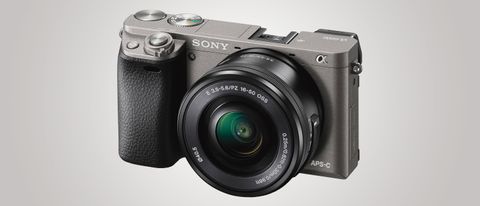TechRadar Verdict
Sony has come within a whisker of creating the perfect CSC in the shape of the A6000, with just a few niggles stopping it being very good indeed.
Pros
- +
Small size
- +
Great EVF
- +
Built-in Wi-Fi & NFC
Cons
- -
No touchscreen
- -
Screen not fully articulated
- -
Frustrating AF set process
Why you can trust TechRadar
New: The Sony A6000 has since been replaced by both the Alpha A6300 and Alpha A6500, but that's meant the price has come down considerably and is a great buy for those looking for a feature-packed mirrorless camera at a decent price.
It's been a few months since Sony took the decision to officially drop the NEX moniker from its E-mount compact system cameras, renaming all of its interchangeable lens cameras with the Alpha brand, regardless of whether it is an A mount or an E mount (those formally known as NEX) camera. This means that some Alpha cameras (such as the A6000) take E mount lenses, while others take A mount lenses.
Since then, the most exciting product to make its debut has been the Sony A7 and the Sony A7R, the company's full-frame E-mount cameras which have been causing waves. Although their prices compare well with other full-frame cameras like the Canon 5D Mark III and Nikon D800, they are still a stretch for many.
So – the solution? Sony has taken the decision to introduce what amounts to an APS-C version of the A7 in the shape of the A6000, one of the best beginner mirrorless cameras and among the best cameras for beginners right now. Since it's now a few years old, it's also one of the best cheap cameras available.
Features
Sony expects NEX-7 customers will head in the direction of the A7, while NEX-6 customers will be catered for by the new A6000.
The A6000 has a similar look and feel to the A7. It features a newly designed 24.3 million pixel APS-C CMOS sensor. Like the device in the A7, the sensor has a gapless on-chip design, which is supposed to increase light collecting efficiency.
The sensor also has 179 autofocus points, of which all 179 are used for phase detection, but 25 are also contrast detection points for the camera's hybrid autofocusing system.
This autofocusing system facilitates Sony's claim that the camera has the fastest AF in the world, for those cameras with APS-C sized sensors at least anyway – and that claim stretches to DSLRs as well as other compact system cameras. With the A7 it also shares features such as Lock on AF, Eye AF and AF area settings.




The camera is also equipped with Sony's latest processor, the Bionz X, something which is also found in the A7/A7R. Sony claims this to be three times faster than the previous generation.
Along with a faster speed, the Bionz X processor facilitates a maximum sensitivity speed of ISO 25600.
On the back of the camera is a tiltable LCD screen, which is joined by an electronic viewfinder, which is the same 0.39 inch device as found in the recently launched RX10 bridge camera.
The A6000 comes complete with inbuilt Wi-Fi and NFC technology
As well as ditching the NEX name, Sony is ditching the NEX menu system, unifying menus across the entire range of Sony cameras – taking the lead from existing Alphas. This should mean that anybody familiar with any type of Sony camera can easily pick one up from higher (or lower) in the range and be able to get started with it straight away.
As is starting to become pretty much standard, the A6000 comes complete with inbuilt Wi-Fi and NFC technology. Like other recent Sony cameras, it is also customisable with apps which can be downloaded to increase functionality – for instance, a time-lapse app is available.
Battery life for the A6000 is around 310 shots, which doesn't compare very favourably with a lot of DSLRs. The Nikon D3300, for instance, has a battery life of more than double that. Previous Sony cameras we have tested before (such as the A7R) have struggled to last a full day, so it will be interesting to see how the A6000 copes.
As standard, the A6000 comes with a 16-50mm f/3.5-5.6 power zoom – the same lens that is packaged with the A5000. You can also buy it body only, with a large range of different E mount lenses now available. As it's a high-end enthusiast camera, perhaps the perfect all-round lens for this camera is the Zeiss 16-70mm f/4 optic, but that comes with a much heftier price tag.
Amy has been writing about cameras, photography and associated tech since 2009. Amy was once part of the photography testing team for Future Publishing working across TechRadar, Digital Camera, PhotoPlus, N Photo and Photography Week. For her photography, she has won awards and has been exhibited. She often partakes in unusual projects - including one intense year where she used a different camera every single day. Amy is currently the Features Editor at Amateur Photographer magazine, and in her increasingly little spare time works across a number of high-profile publications including Wired, Stuff, Digital Camera World, Expert Reviews, and just a little off-tangent, PetsRadar.
